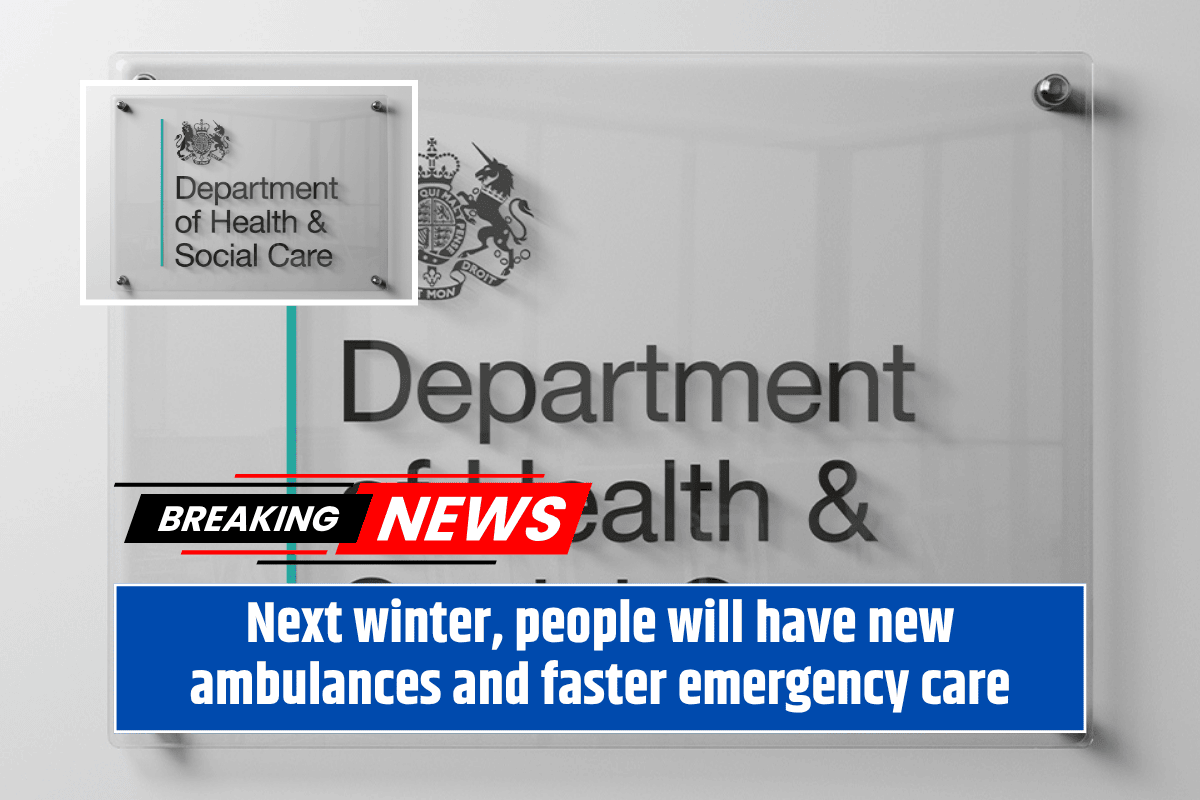The UK government is rolling out a major set of reforms aimed at improving emergency care services in the National Health Service (NHS). With an investment of almost £450 million, the government aims to reduce waiting times in Accident and Emergency (A&E) departments and ensure patients receive quicker, more appropriate care. The plan is designed to improve the overall emergency care system, with a focus on shifting more patient treatment to community settings and addressing long-standing issues such as hospital delays and ambulance handover times.
Key Features of the New Emergency Care Reforms
The government’s emergency care reforms will introduce several new measures to ease the pressure on A&E departments and deliver care in a more efficient and timely manner. These initiatives are part of the broader “Plan for Change,” a long-term effort to modernize NHS services and improve emergency care for the public. Some of the major changes include:
Expansion of Urgent and Emergency Care Facilities
A significant part of the investment will go toward expanding urgent and emergency care services. The government plans to open around 40 new Same Day Emergency Care (SDEC) centres and Urgent Treatment Centres. These facilities will allow patients to receive treatment and be discharged within the same day, preventing unnecessary hospital admissions. Additionally, up to 15 new mental health crisis assessment centres will be set up to provide the right care for individuals experiencing mental health crises, keeping them out of A&E, where they often don’t receive the necessary care.
More Ambulances and Paramedic-led Care
Another key aspect of the reforms is the introduction of nearly 500 new ambulances by March 2026. This expansion will help reduce waiting times for ambulance services and ensure that more ambulances are available to respond to emergencies quickly. Alongside this, there will be an increase in paramedic-led care in the community, allowing patients to receive treatment at the scene of an accident or in their homes, avoiding unnecessary hospital visits.
Moving Care to the Community
The government is focused on shifting more emergency care out of hospitals and into community settings. This includes expanding urgent community response teams that provide care to people at home, as well as making greater use of virtual wards. Virtual wards allow patients to receive hospital-level care in the comfort of their own homes, speeding up their recovery while freeing up hospital beds for those who need them most. The goal is to reduce the burden on A&E departments and provide care in a setting that’s more convenient and effective for patients.
Improving Emergency Care Through Better Coordination
A significant part of this plan is improving the coordination between different NHS services. The government aims to enhance collaboration across NHS trusts, primary care, and ambulance services to better manage patient flow and ensure that patients are seen at the right time and in the right place. This means focusing on vulnerable patients and ensuring they receive the right treatment without unnecessary delays.
Tackling Winter Pressures and Hospital Delays
The plan includes measures to address the pressures the NHS faces during the winter months, when demand for emergency services tends to rise. This will include better planning for winter, increasing transparency around performance, and setting clear targets to improve response times and reduce the time patients spend waiting in corridors. The reforms also focus on eliminating the delays in ambulance handovers, which have been a major issue in recent years, ensuring that patients are quickly transferred to the appropriate care.
Government’s Commitment to Reducing Long Waiting Times
As part of this emergency care overhaul, the government aims to reduce the number of patients who wait more than four hours in A&E. It’s estimated that 800,000 fewer people will have to wait this long in emergency departments this year, thanks to the changes being introduced. The government’s long-term vision is to ensure that patients receive quicker and more efficient care across the NHS, whether in hospitals or community settings.
The government’s new plan for emergency care is a significant step toward improving the quality and speed of healthcare in the UK. With nearly £450 million in investment, the reforms aim to reduce waiting times, enhance patient experiences, and shift more care to community settings. This plan is expected to ease pressure on A&E departments, cut ambulance waiting times, and provide better mental health care, all while ensuring that patients receive timely and appropriate treatment.
As these changes take effect, the government hopes to rebuild public confidence in the NHS and provide more reliable emergency services, particularly during high-demand periods such as winter.











